The Election That Defined What ‘Real Americans’ Ate and Drank
Large, drunken rallies touted a populist who drank hard cider.
The American presidential campaign of 1840 has been described as the first carnival campaign and the first drunken election. But the contest—between incumbent president Martin Van Buren and the challenger William H. Harrison—was also the first to invoke food as a signifier of class and social differences. American politicians eating and drinking a certain way in public—to appear of the people—traces back to this outrageous, larger-than-life election.
Food does not seem to have played much of a role in marking social distinctions in Colonial and early Republican America. Anglican minister Charles Woodmason’s comments on the poverty-stricken people of the Carolina backcountry in 1768 were exceptions. Hog, hominy, and corn liquor were not to his taste: “Their Provisions I could not touch—All the Cookery of these People being exceeding filthy, and most execrable.”
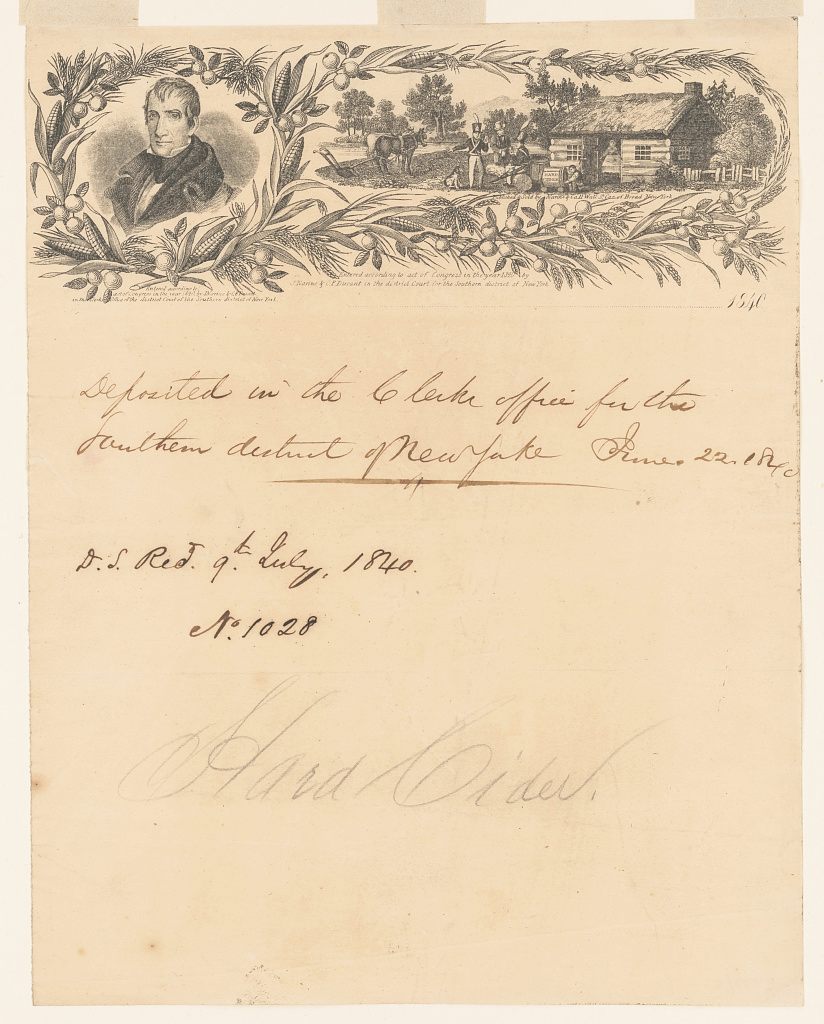
But with the migration of Americans to the west and south—along with industrialization and a rising urban working class—a populist, democratic spirit flowed through the electorate. So did humble food: pork and corn, hunks of beef, and coarse breads, all simply prepared, became staples in the new settlements.

This made American food culture unusual for its time. The tart-tongued English visitor Frances Trollope was appalled at such fare and deplorable eating habits. As she traveled down the Mississippi River on a steamboat in the early 1830s, she complained of the “total want of all the usual courtesies of the table, the voracious rapidity with which the viands were seized and devoured … and the still more frightful manner of cleaning the teeth afterwards with a pocket knife.” No truly elite restaurants existed until New York’s grand Delmonico’s restaurant opened in 1837. Proudly common Americans drank hard cider and corn liquor, not French wines.
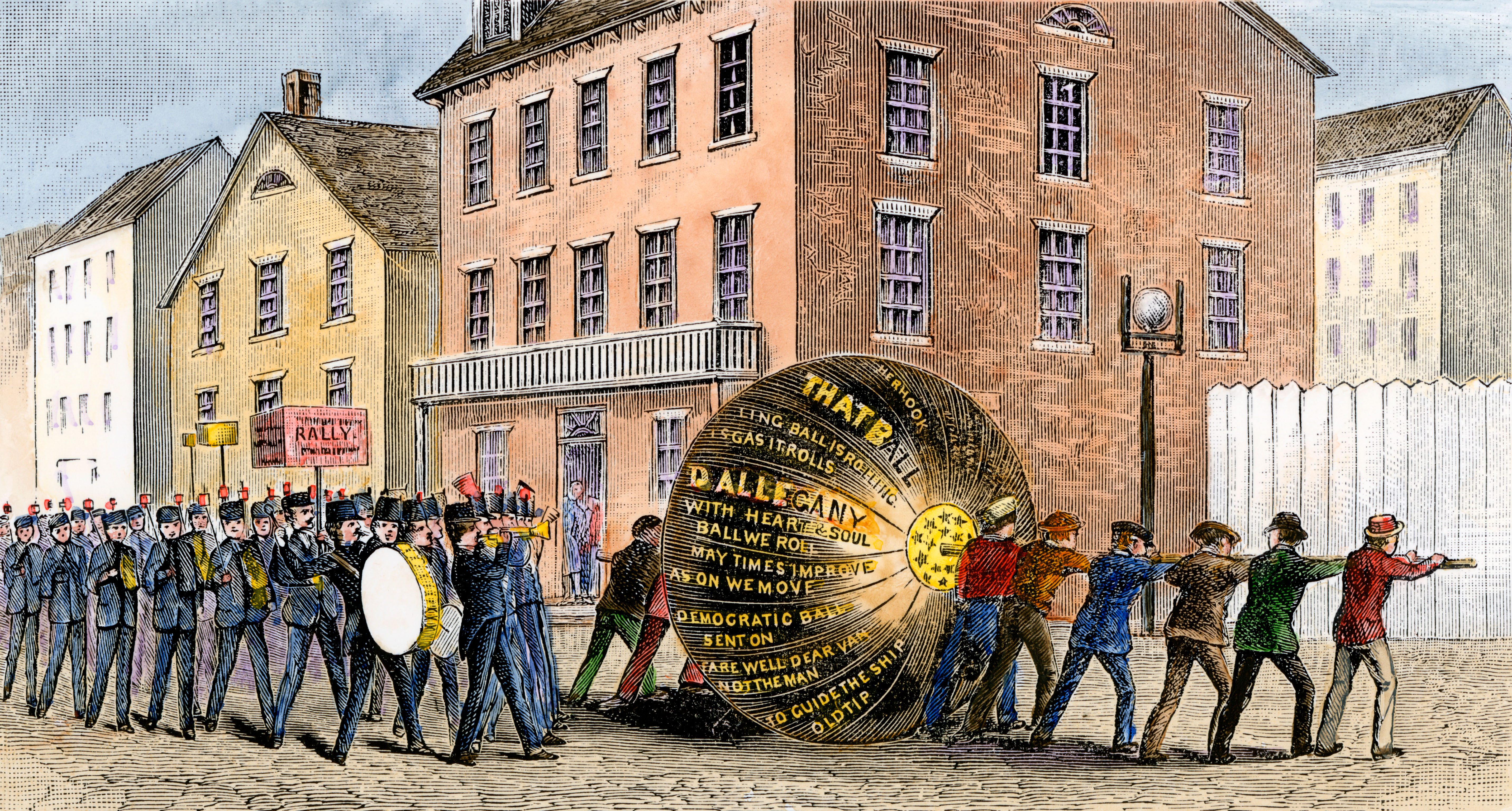
The incumbent in the 1840 election, Martin Van Buren, began his presidency under the cloud of a great depression. People were angry over unemployment that they blamed on elites, and they were incensed that Van Buren seemed indifferent to their plight. The opposition Whig party chose William Henry Harrison, a member of Congress from Ohio, to challenge Van Buren. Their strategy was to portray Harrison as a man of the people from rural America, as opposed to the supposedly snobby insider, Van Buren. Harrison lived in a log cabin, they said, and drank hard cider just like “real folks.”
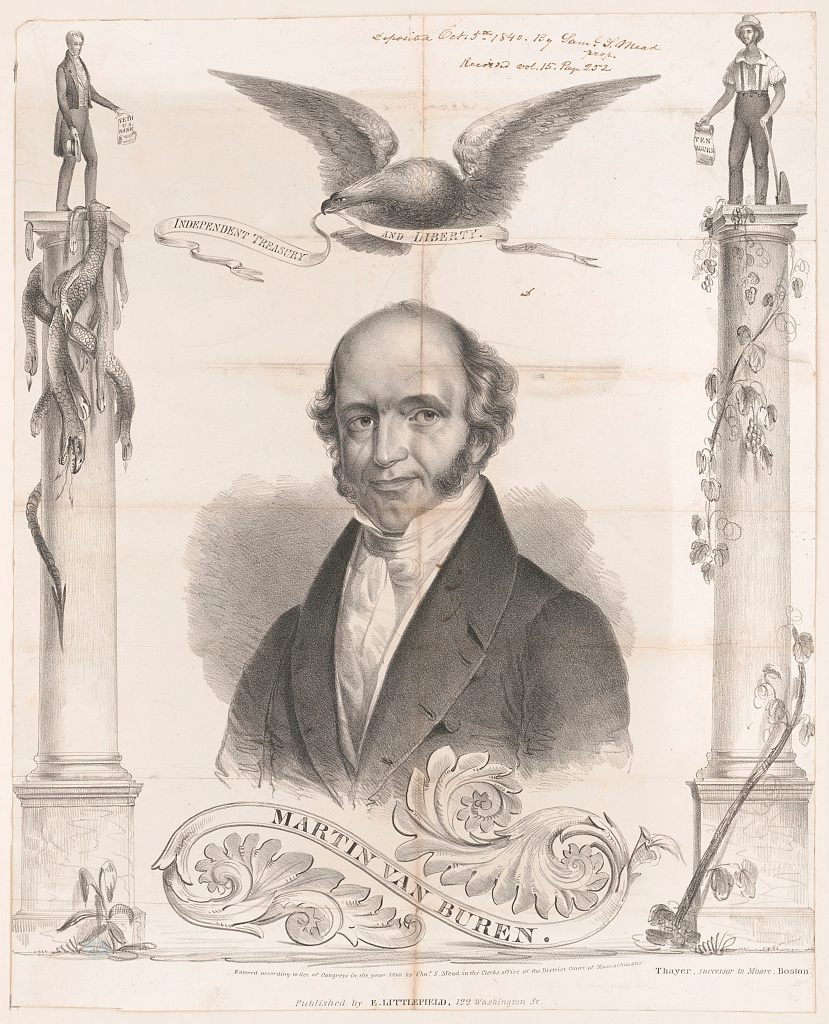
Newspapers in that era were organs of political parties. The first issue of the Ohio Whig paper, the Log Cabin, pictured what was supposed to be Harrison’s cabin, complete with a barrel of cider out front. Van Buren, the paper claimed, dined on fancy French food at the White House. He ate oysters every day with golden spoons. In the “Golden Spoon Oration,” delivered in the House of Representatives, Pennsylvania congressman Charles Ogle described what he considered the excesses of Van Buren’s administration. Over the course of three whole days, he called the White House a “Presidential Palace” that outdid even “the grand saloons at Buckingham Palace.”
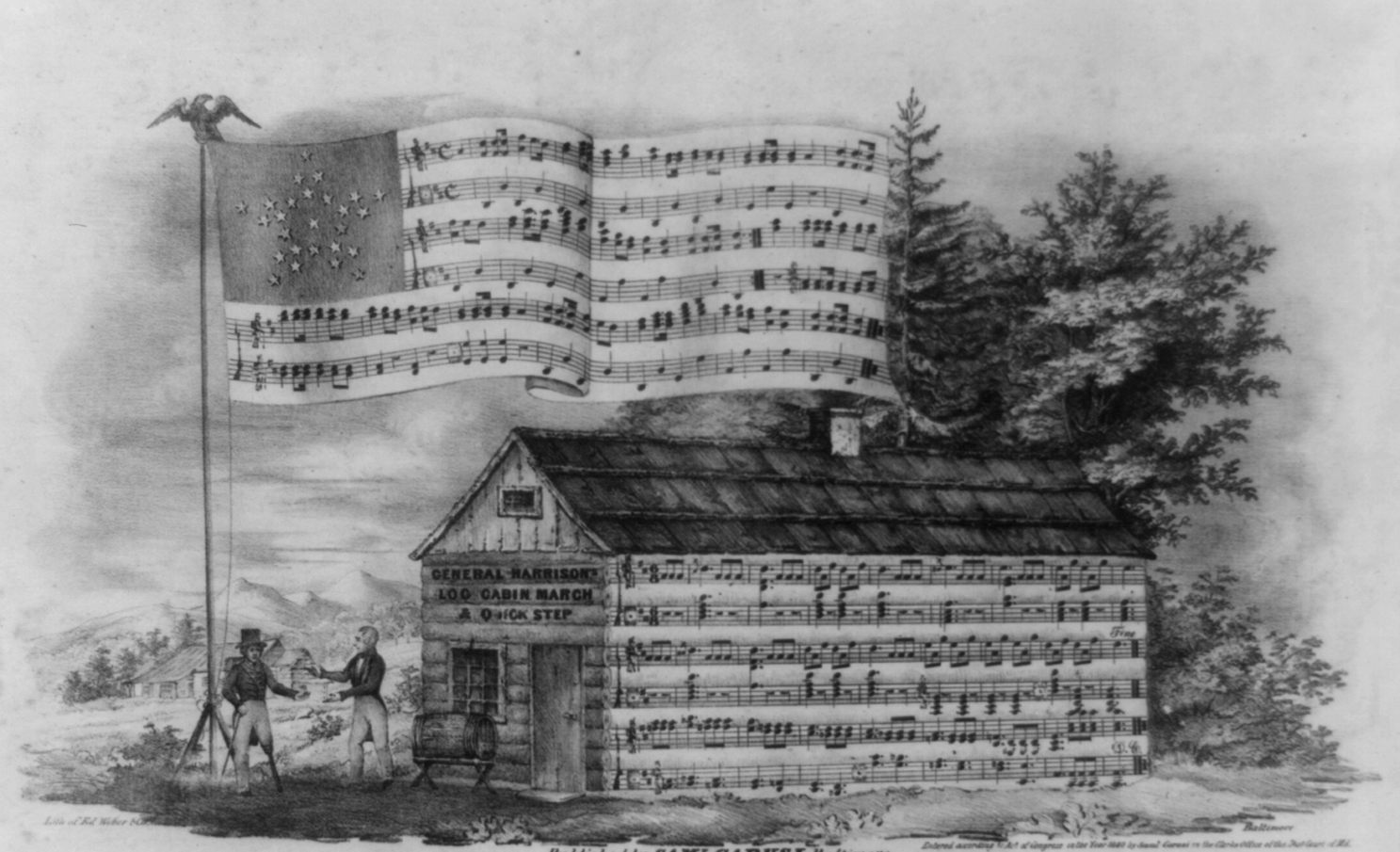
Upon the President’s table stood turtle soup, roasted capons and duck with fancy sauces, pâtés and foie gras, complex desserts, and, horror of horrors, champagne. No, said Ogle, Van Buren was not a true American, because he never dined upon hog and hominy or settled down to fried meat, gravy, and hard cider. But Harrison, Americans were told, did.
Not for the first or last time, lies filled the air. Van Buren did eat fine foods on fancy china, but so had his predecessors, including the populist Andrew Jackson. And Harrison was not a country bumpkin, but the educated scion of a distinguished Virginia family. Raised in wealth, he had been made secretary of the Northwest Territory in 1798 and governor of the Indiana Territory in 1801. His Ohio mansion, not a log cabin, sat amid productive farm fields in which he took an active interest. Like Jefferson and Washington before him, Harrison was absorbed in agricultural improvement.
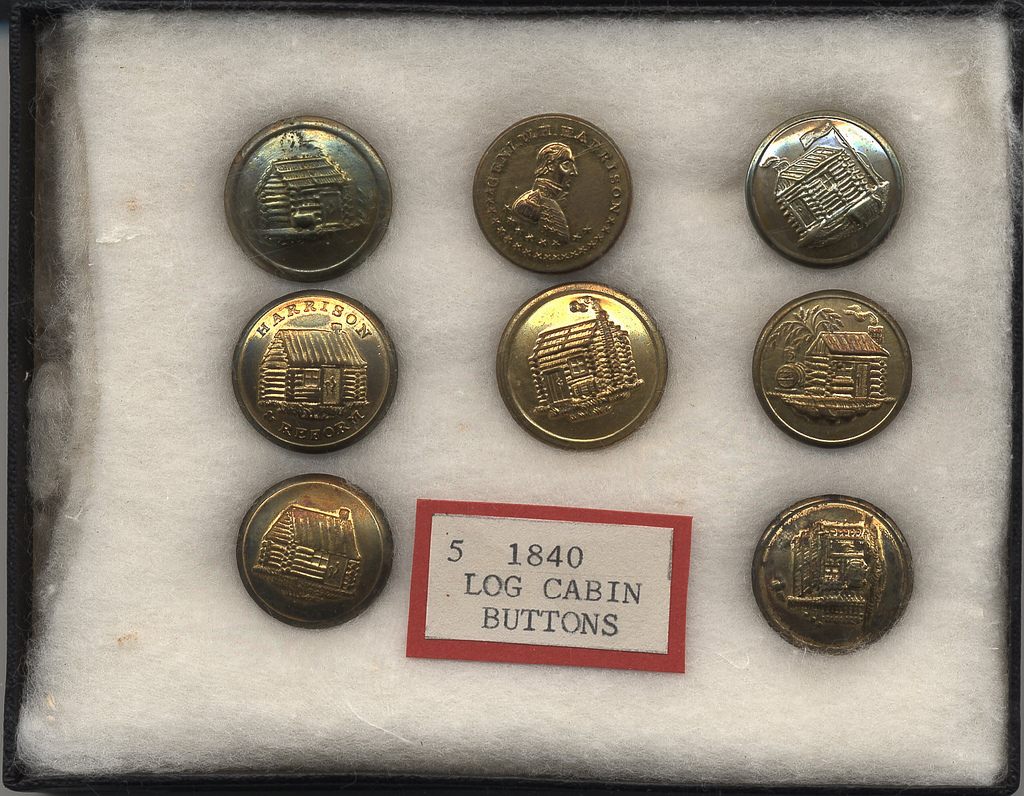
But his election handlers would have none of the country gentleman. Instead they put on a raucous campaign and huge rallies of as many as 60,000 people. Amidst supporters rolling logs from town to town and a 10-foot-tall ball made of paper and tin, the campaign served whiskey and barrel upon barrel of hard cider. Literally tons of all-American meat and pies were cooked for rally after rally. So popular was the log cabin theme that the Philadelphia distillery E. C. Booz created log cabin bottles for the grand parties. The campaign made log-rolling, getting the ball rolling, and booze (an old Dutch word reinforced by the distiller) parts of the American vocabulary.
More importantly, for the first time, food became the marker of social class, an ongoing cultural symbol to be played upon by politicians and marketers ever since. When American politicians hold pancake breakfasts and dutifully eat corn dogs at state fairs, they are following the tradition established by William Henry Harrison: the man who dominated the vote and won the presidency on the promise that he ate like real Americans.
This article is adapted from A Rich and Fertile Land: A History of Food in America by Bruce Kraig. Available now from Reaktion Books’ Food and Nations series. December 2017.
Gastro Obscura covers the world’s most wondrous food and drink.
Sign up for our regular newsletter.



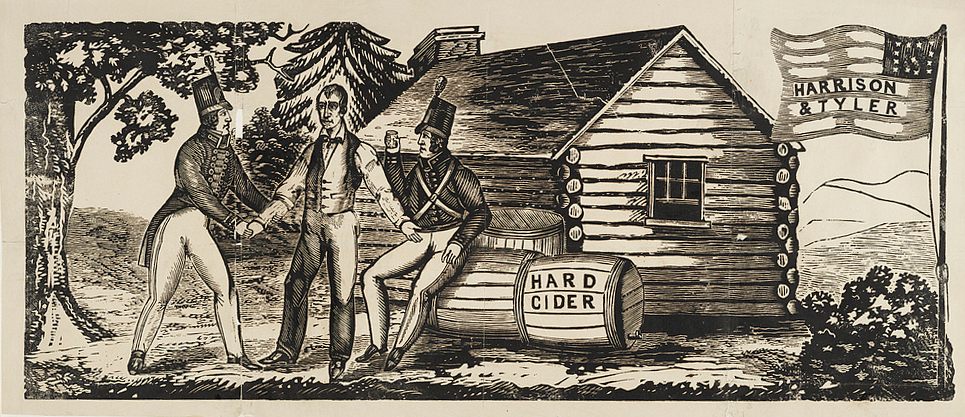




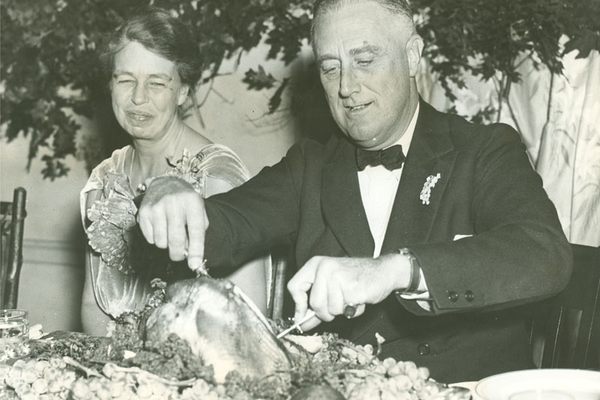












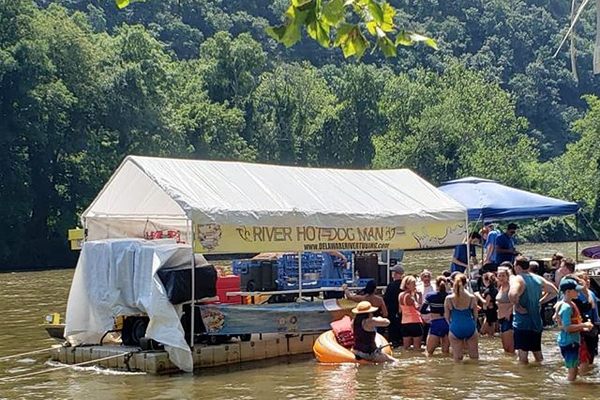















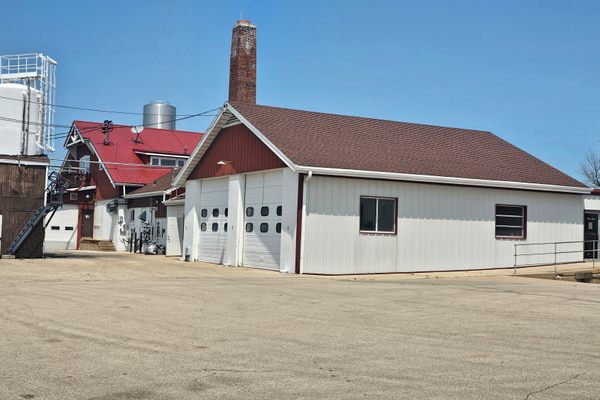


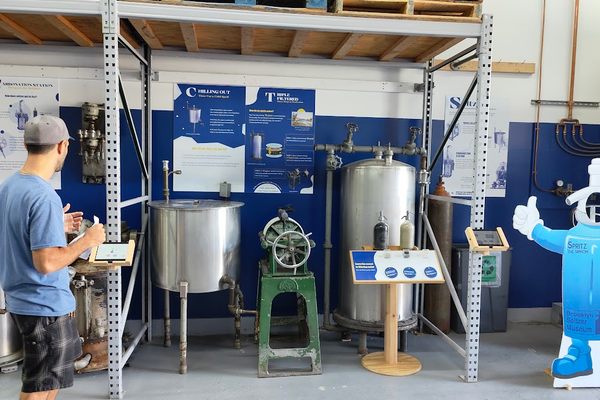


Follow us on Twitter to get the latest on the world's hidden wonders.
Like us on Facebook to get the latest on the world's hidden wonders.
Follow us on Twitter Like us on Facebook